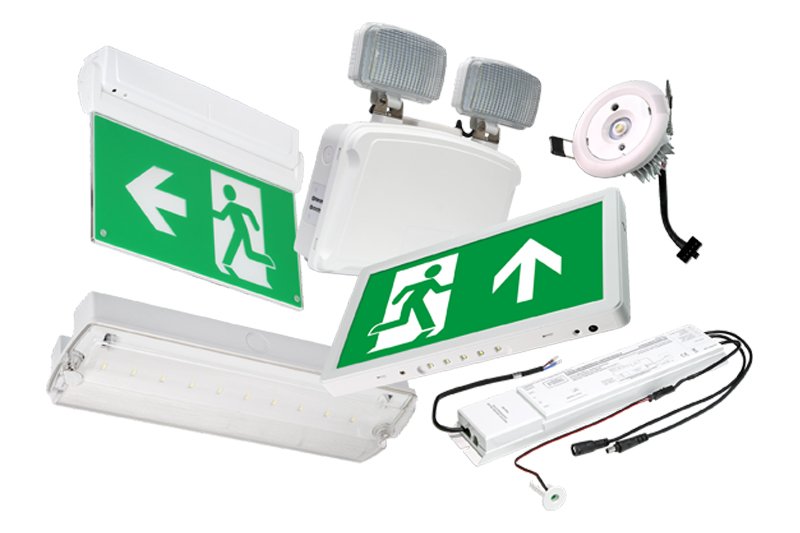EMERGENCY LIGHTING
EMERGENCY LIGHTING REQUIREMENTS
In order to be compliant with emergency lighting requirements, there needs to be enough emergency lighting for people to be able to leave the premises in the event of an emergency. Emergency exits need an emergency exit luminaire above the door, as well as signage to the emergency exit. There also needs to be lighting for every change in direction leading to an escape door. UK legal emergency lighting regulations require there to be an emergency lighting system which covers the following:
Each exit door
Any trip hazards (i.e. stairs)
Any changes in direction
First aid equipment
Fire alarm triggers
Fire extinguishers
Power supplies
Escape routes, including lifts
Intersection of corridors
Outside each final exit and on external escape routes
Emergency escape signs
Stairways so that each flight receives adequate light
Changes in floor level
Windowless rooms and toilets exceeding 8m²
Fire fighting equipment
Fire alarm call points
Equipment that would need to be shut down in an emergency
Areas in premises greater than 60m²
Any form of emergency lighting should be operating at 1 lux. Lux is a measure of light based on the m² from the distance of a lit candle. For context, a normal office space is usually lit at around 500 lux, and 100 lux is used in lifts, corridors and stairs.
HOW DOES EMERGENCY LIGHTING WORK?
There are different types of emergency lighting; it can be maintained, non-maintained, or combined. Often there are choices with how long they remain on after a power failure.
MAINTAINED EMERGENCY LIGHTING
This means that the emergency light fitting works with the main lights and is connected to the other lights and is controlled with the normal lighting. When the power fails, the emergency light remains on through the battery which has been charged whilst the mains is on. It can also be turned off whilst the mains is on if it is not needed. The battery often emits around 10% of the normal light levels.
NON-MAINTAINED EMERGENCY LIGHTING
This is purely for emergency use, and so only switches on when there is an emergency and the mains electricity turns off. The battery is charged by the mains and there is a small LED light which should show a green light. This also has to have regular testing to ensure that this still works as it does not switch on usually. This is usually the exit signs.
COMBINED EMERGENCY LIGHTING
This is the maintained and non-maintained emergency lighting combined - there are usually two or more lights. One is usually run on the emergency lighting supply, whilst the other is on the mains. This combination can be maintained or non-maintained and allows for emergency lights and exit signs to co-exist as one system.
EMERGENCY LIGHTING TEST SHEET
In order to properly test if the emergency lighting works, you have to stimulate a mains failure by isolating the lighting circuits. The emergency light system can be tested by a ‘fishtail’ key, which needs to be inserted by the mains fuse board, or near the relevant light switches. After turning off the mains power, it is necessary to then walk the premises and log each light to see if it is working through an emergency light risk assessment. This should be conducted once a month. Once complete, you should ensure that all emergency lights are recharging via the LED light.
After this full discharge test, precautions must be taken as the batteries can take up to 24 hours to recharge and so the premises should not be occupied until everything is restored. For many buildings it is possible to do this over the weekend, but for flats and other premises which are occupied full time, there will need to be other arrangements whilst the batteries are recharging.
Below is an emergency lighting test sheet which gives a suggestion of the risk assessment procedure for testing emergency lights:





